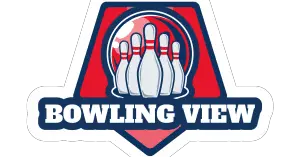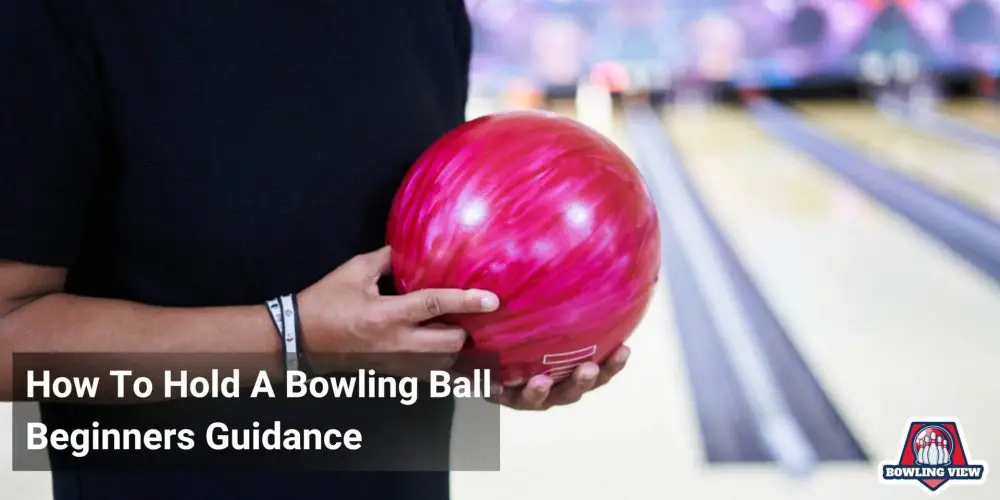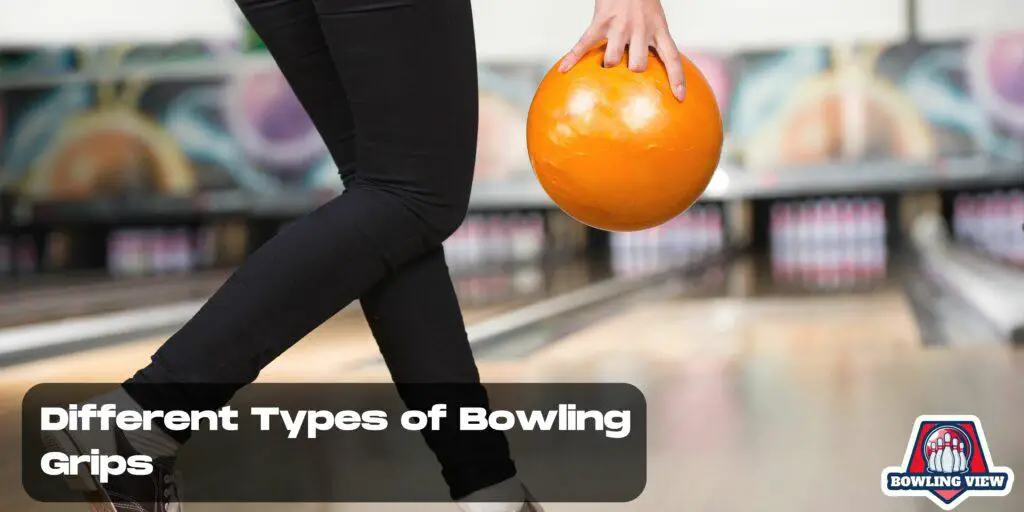Welcome to the fascinating world of bowling! You’ve chosen to explore a sport where precision, power, and timing blend into a unique symphony of skill.
The first thing you must master is how to grip a bowling ball properly. It may seem daunting, but this comprehensive guide will walk you through the process, one step at a time.
Understanding the Bowling Ball
Before we delve into how to hold your bowling ball, it’s crucial to familiarize yourself with the tool of your trade – the bowling ball itself.
A standard bowling ball features three holes drilled into it, designed to fit your fingers and thumb.
These holes are crucial in establishing a good grip on the ball, which in turn will affect how you control and release it.
The quality of your grip is instrumental in determining the spins on the ball, rotation, and overall ball action.
Must-Have and Nice-to-Have
| Must-Have | Nice-to-Have |
|---|---|
| A bowling ball with three holes | A custom-fitted bowling ball |
| Comfortable shoes | Professional bowling shoes |
| Basic understanding of grip types | Specific knowledge of unconventional grip types |
Different Types of Bowling Grips
Now that you have a fundamental understanding of a bowling ball, let’s move onto grips.
There are several ways to grip a bowling ball, but we will focus on the three most common types: the conventional grip, the semi-fingertip grip, and the fingertip grip.
These different grips give bowlers distinct degrees of control over the ball, and choosing one largely depends on your comfort and the type of ball action you want to achieve.
1. Conventional Grip
The conventional grip is the most common type of grip, particularly for beginners. It offers the highest level of security and is easy to learn.
- Insert your thumb all the way into the thumb hole of the ball. Your thumb should fit snugly inside the ball. If it feels too tight or too loose, you may need to find a different ball that fits your thumb better.
- Insert your middle and ring fingers into the remaining holes. Your fingers should be inserted up to the second knuckle joint. This grip feels very secure because more of your hand is inside the ball, giving you a comfortable grip and stable control.
2. Semi-Fingertip Grip
The semi-fingertip grip is a middle ground between the conventional and fingertip grip. It allows more control than the conventional grip but is less challenging to master than the fingertip grip.
- Insert your thumb all the way into the thumb hole. Similar to the conventional grip, your thumb should fit comfortably into the hole.
- Insert your middle and ring fingers into the finger holes. However, this time, your fingers should be inserted only until the first and second knuckle, giving you a bit more control over the ball.
Another interesting read> Do Pro Bowlers Use Finger Inserts?
3. Fingertip Grip
The fingertip grip is typically used by more advanced bowlers. This grip allows for the most control over the ball’s rotation and spin but can feel harder to hold onto at first.
- Insert your thumb all the way into the thumb hole. Again, ensure the thumb fits snugly but comfortably.
- Insert only the tips of your middle and ring finger into the finger holes. In this case, only the area up to the first knuckle should be inserted. This grip offers the best rotation of the ball and a higher chance of achieving a ‘hook’.
4. Note on Sarge Easter Grip
An uncommon grip, the Sarge Easter grip, uses a conventional grip on the middle finger and a fingertip grip on the ring finger. It gives a unique combination of control and hook, but it might be challenging to master for beginners.
How to Hold a Bowling Ball Properly
Now that you’ve learned about the types of grips, let’s dive into how to hold a bowling ball properly. Here, we’ll use the conventional grip as our example, given its simplicity and widespread use.
Step-by-Step Guide to Holding a Bowling Ball
- Approach the Ball Return Unit: Start by approaching the ball return unit at your local bowling center or alley. The ball return unit is where the balls resurface after each throw.
- Select Your Ball: From the available balls, select the one that fits your hand comfortably. The holes of your bowling ball should fit your fingers without being too tight or too loose. The weight of the ball should also feel manageable. Remember, a good fit and comfort are key.
- Hold the Bowling Ball: Once you’ve selected your ball for bowling, place your bowling hand (the one you’ll be bowling with) into the holes. Start with your thumb, sliding it way into the thumb hole. Follow this by inserting your middle and ring finger into the remaining holes, up to the second knuckle.
- Cradle the Ball: After gripping the ball, cradle the ball in your bowling hand and support it with your other hand underneath. Make sure your fingers and thumb are comfortable and securely inserted. The ball should feel secure and stable, and your grip on the ball should be firm but relaxed.
- Proper Bowling Stance: Stand upright and hold the ball close to your body. Your elbow should be slightly bent, allowing the ball to rest in your hand comfortably. Keep your wrist straight to maintain a steady hold on the ball.
Remember, a tight grip may lead to strain and inaccurate throws, while a loose grip can cause the ball to slip from your hand. Find a balance that ensures control without compromising comfort.
Practicing Your Bowling Grip
Now that you know the way to hold a bowling ball, it’s time to practice. Remember, the best grip for you may depend on factors like the type of ball action you desire, your strength, and comfort.
You may start with a conventional grip and progress to a fingertip grip as you become more experienced.
Consider getting a custom drilled ball that’s specifically fit to your hand for the best possible comfort and control. Remember, the ball correctly fitted to your fingers and thumb will give you the best chance of improving your game.
Bowling is a thrilling sport that requires patience, precision, and practice. With these instructions on how to hold a bowling ball, you’re well on your way to becoming a skilled bowler.
Keep practicing, and don’t forget to enjoy every moment at the bowling alley. Happy Bowling!
Note:
Remember that the rules and techniques of bowling can vary depending on the types of bowling (like ten-pin, five-pin, duckpin, etc.) you’re playing. Make sure to familiarize yourself with the specific rules and techniques of the type of bowling you’re involved in.
conclusion
In conclusion, understanding and mastering your bowling grip is an essential step in improving your game. As with any sport, consistency and practice are key.
Whether you’re a beginner starting with a conventional grip or an experienced player using a fingertip grip, finding the right balance and comfort in your hold can significantly enhance your control over the ball and overall performance.
Remember, bowling is not just about scoring; it’s about enjoying the game, challenging yourself, and continually improving your skills.
Frequently Asked Questions
Below, we’ve compiled some of the most frequently asked questions about bowling techniques and grips to help clarify any uncertainties and enhance your game.
Slide your thumb into the hole to achieve this grip. Your central and ring fingers should be in their respective holes to the second knuckle. The fingertip grip is reserved for more seasoned bowlers. Your thumb is still fully inserted, but your middle and ring fingers are only inserted into the first knuckle.
The correct way to hold a bowling ball is the “fingertip grip.” To do this, you should place your middle finger and your ring finger into two of the holes in the ball. Then, wrap your thumb around the side of the ball so that it points toward your palm.
Make sure that all three fingers are evenly distributed around the ball and that you are gripping the ball securely. Your index finger should be kept close to your thumb, but not necessarily touching it. Keeping your fingers in this position will help you control the spin on the ball and make your bowling shot more accurate. Additionally, always make sure that the weight of the ball feels comfortable for you before each throw.
Professional bowlers tend to use a slightly different grip than the basic three-finger grip. Instead of placing their thumb and two fingers in the holes, they place their middle finger along with their thumb in one of the holes. This creates a more comfortable and secure grip that provides greater control over the ball.
How you hold the bowling ball depends on your personal preference. Generally speaking, holding the ball higher up will give it more momentum and speed when you swing, while holding the ball lower down gives it greater control. Experiment with both methods to find what works best for you.
The most common grip used in bowling is known as the “fingertip grip”. With this method, bowlers place their thumb and two fingers into the holes on the ball and then wrap their middle fingers around them. This gives a secure grip that allows for maximum control over the ball when swinging it down the lane. Different players will find different methods that work best for them, so experiment with different grips to find what works best for you.
When holding a bowling ball, the goal is to have it rest in your palm with a comfortable grip. The fingers should be placed into the holes of the ball and then wrapped securely around them, while the thumb should remain loose. The weight of the ball should be distributed evenly across both hands and all parts of each hand should be used for balance and support. This allows the bowler to maintain a consistent grip, giving them more control over their release and resulting in better accuracy when throwing the ball down the lane.
To ensure that you are not dropping your shoulder during the bowling swing, it is important to practice good form. When starting the backswing, keep your shoulders level and your elbow close to your side. As you continue with the forward swing, allow your elbow to lead out in front of you and push off from your back leg for additional power. Finally, keep your shoulder and elbow in the same position throughout the entire swing. This will ensure that you maintain a consistent balance and form, which will help you to avoid dropping your shoulder.
It is important to properly position your thumb when releasing the ball. You want to make sure that the ball is released at a consistent angle and with enough force to reach the pins. To achieve this, start by placing your thumb near the middle of the grip hole such that it forms an “X” with the other three fingers when viewed from the side. As you release the ball, allow your thumb to slip forward and slightly downward while keeping its angle consistent with the other fingers. This will ensure that the ball is thrown at a consistent angle and with enough force to reach the pins.



